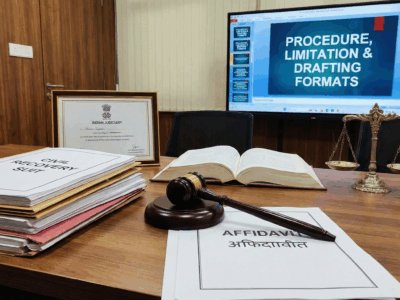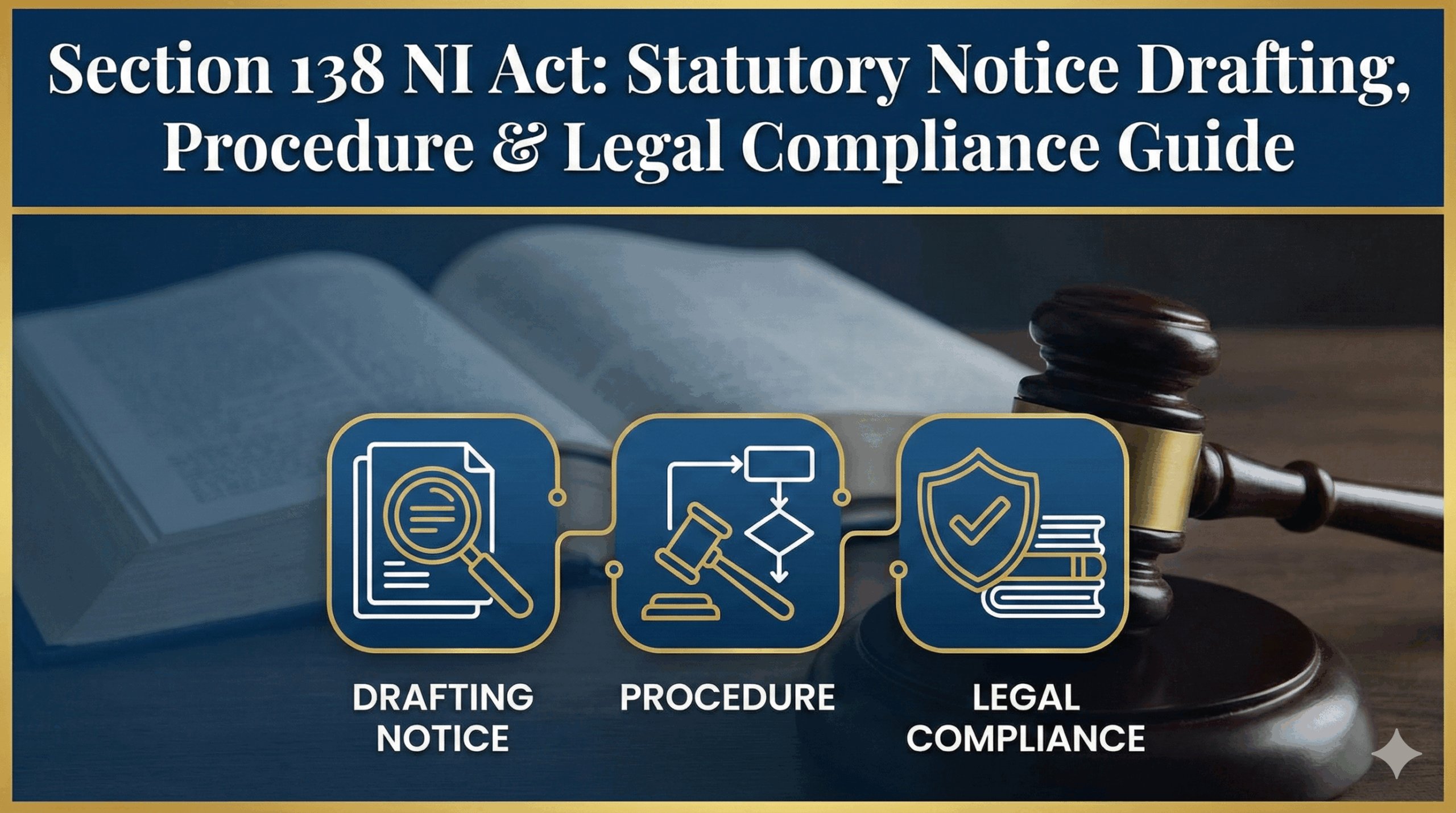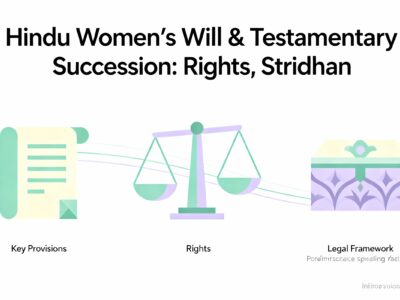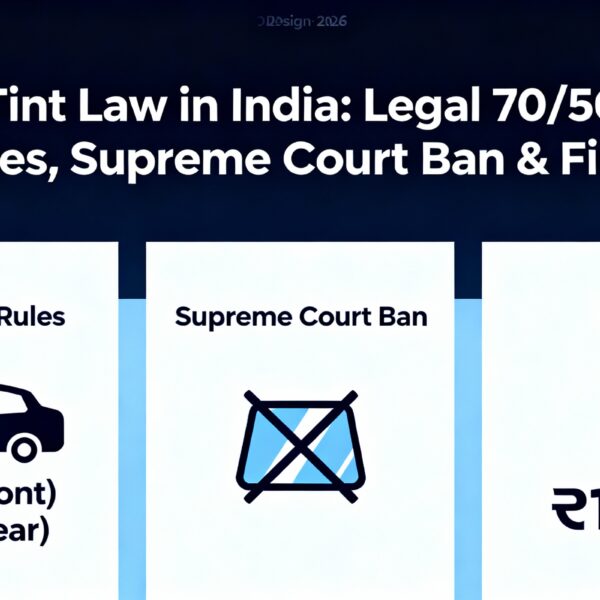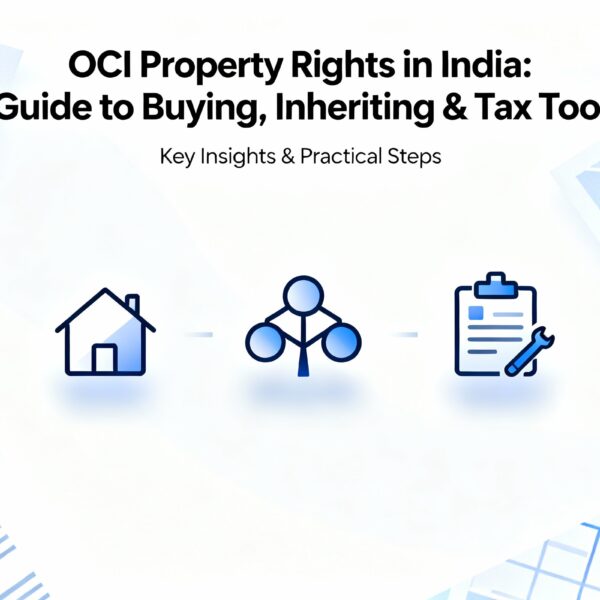Are you being systematically isolated from meetings, stripped of responsibilities, or ignored by management? This could be “quiet firing,” a subtle but illegal tactic actionable under Indian labour law as constructive dismissal. This comprehensive 2025 guide explains your legal rights against workplace isolation, details the unfair labour practices involved, and provides a strategic action plan—from documenting evidence and filing an HR complaint to sending a legal notice. Understand how to protect your career and fight back.
Understand the concept of "Quiet Firing," your legal rights against it, and a step-by-step plan to take action. The term "quiet firing" describes a subtle but deliberate management strategy to make a work environment so unrewarding that an employee feels compelled to resign. While not a formal termination, this systematic isolation is a legally recognized grievance in India. It's a calculated attempt to bypass labor laws that protect employees from wrongful dismissal. Excluded from Meetings Systematically left out of key discussions and projects. Reduced Responsibility Gradual stripping of duties, making the role insignificant. No Growth Opportunities Consistently passed over for promotions, raises, or training. Lack of Communication Minimal support, feedback, or coaching from management. The primary legal weapon against quiet firing is the doctrine of Constructive Dismissal. This principle states that if an employer's actions make the work environment so intolerable that an employee has no choice but to resign, the law treats that resignation as a wrongful termination by the employer. The best defense against workplace isolation is to make yourself an indispensable and visible part of the organization. By actively managing your career, you can build a professional shield that makes such tactics less likely to occur and easier to challenge if they do. Ensure your contributions don't go unnoticed. Send concise weekly or bi-weekly summary emails to your manager highlighting your accomplishments, progress on projects, and upcoming priorities. This creates a positive paper trail of your performance. Build professional relationships across different departments. Allies in other teams can provide alternative perspectives and may be aware of opportunities or internal shifts that you are being excluded from. Stay relevant by continuously learning new skills, whether through company-provided training or external courses. This not only enhances your value but also demonstrates a commitment to growth that is hard to ignore. Keep a copy of your official job description and any documented goals. This becomes a crucial baseline to demonstrate how your responsibilities are being systematically stripped away. An employee's protection against such practices is built on a foundation of constitutional rights and specific labour laws. Understanding these is the first step to building your case. This Act prohibits "Unfair Labour Practices," which can include the tactics used in quiet firing, such as victimization and malicious exercise of employer's rights. Learn more about the Act. Under the Industrial Disputes Act, 1947, several clauses can be invoked. Hover over a section for details. Beyond the legal and professional ramifications, it's crucial to acknowledge the significant mental and emotional toll of workplace isolation. This isn't just about missing meetings; it's a form of psychological pressure that can lead to severe stress, anxiety, and a diminished sense of self-worth. Recognizing these impacts is the first step toward building resilience during a difficult period. Consistent isolation & exclusion. Anxiety, self-doubt, hypervigilance. Loss of motivation, decreased productivity. Feeling forced out due to intolerable conditions. This cycle is often misinterpreted by employers as "poor performance," creating a pretext for dismissal. Documenting your experience is key to breaking and proving this cycle. While this guide focuses on employee rights, it's important to understand the employer's perspective and responsibilities. Companies have a legal "duty of care" to provide a safe and non-hostile work environment. Failing to address or prevent quiet firing exposes them to significant risks. Litigation costs, back wages, and compensation claims can be substantial. A court finding of unfair labour practices damages an employer's reputation. Quiet firing is rarely a secret. Other employees see it, leading to a culture of fear, reduced productivity, and loss of trust in management. A toxic environment drives away top performers, not just the intended target. It makes it harder to attract new talent in a competitive market. Facing workplace isolation requires a methodical response. The goal is to transform your subjective experience into an objective, undeniable record of fact. Follow these three phases carefully. This is the most critical phase. Without evidence, your claims are just allegations. Start a private journal (on a personal device) and record everything. Once you have a solid record, file a formal, written complaint with HR. This is a strategic step that shows you attempted to resolve the issue in good faith. An employer's failure to investigate strengthens your case. Key elements of your HR complaint: Your letter should be professional, factual, and unemotional. Use this template as a guide. Subject: Formal Grievance Regarding Workplace Isolation and Unfair Treatment Dear [HR Manager's Name], I am writing to formally document a series of incidents that I perceive as a systematic effort to isolate me from my professional duties, constituting an unfair and hostile work environment. This has occurred despite my consistent positive performance record. Since [Start Date], I have observed the following: These actions violate the principles of fair labour practice and have created an environment where it is untenable for me to perform my duties effectively. I request a formal investigation into this matter and a discussion to restore my role and responsibilities as per my employment agreement. Sincerely, [Your Name] If the internal process fails, it's time to approach government authorities. This moves the dispute into a formal legal arena. Your employer's type and location determine the correct authority. Select your situation below to see where to file a complaint. Indian courts have repeatedly upheld the principle of constructive dismissal. These judgments establish a legal foundation for your case, showing that forcing an employee to resign through hostile actions is legally equivalent to wrongful termination. Citing these precedents can strengthen your claim. Supreme Court of India Key Finding: The court affirmed that an employer's actions, which leave an employee with no option but to leave, can be considered termination by the employer. This case is crucial for establishing that the employee's resignation was not voluntary. Federal Court Key Finding: A foundational case that established the power of Industrial Tribunals to order reinstatement. It confirmed that the employer cannot simply end the employment relationship at will if the termination is unjust. The principle extends to situations where the employer creates conditions for resignation. In India, Labour Law is a "concurrent subject," meaning both the central government and state governments can legislate on it. While the Industrial Disputes Act, 1947, provides a national framework, your rights can also be affected by your state's specific Shops and Establishment Act. These acts regulate conditions of work for employees in shops, commercial establishments, and residential hotels within that state. These local laws can provide additional avenues for grievances or specify different procedural requirements. For example, the rules for working hours, payment of wages, and termination procedures might have nuances specific to your state. It is always advisable to consult a lawyer familiar with the local labour laws of the state where you are employed. Taking legal action is a major decision. It's crucial to weigh the potential risks of employer retaliation against the possible legal remedies. Here's the paradox: to claim constructive dismissal, you must resign. This act demonstrates that the conditions were truly intolerable. However, this should be a calculated move, not an emotional one. Your resignation letter must explicitly state it is a "forced resignation" due to the hostile environment created by the employer, referencing your prior HR complaint. Resigning to claim constructive dismissal is the start of a new phase. It's vital to manage your career and finances proactively while your legal case proceeds. Your professional life does not have to pause. When asked in interviews why you left your previous job, be honest but professional. Frame your departure positively. Example: "I left my previous role to seek a more collaborative environment where I can better contribute my skills in [your skill area]. I thrive in teams that prioritize open communication and shared goals." Avoid speaking negatively about your former employer. Do not list the manager or colleagues involved in the quiet firing as references. Instead, rely on trusted former colleagues, managers from previous roles, or senior leaders from the same company who can speak to your skills and work ethic objectively. This checklist can help you objectively evaluate your situation. The more questions you answer "yes" to, the more likely you are experiencing a pattern of behavior that could be considered quiet firing. Use this as a tool to organize your thoughts and evidence.Navigating Workplace Isolation in India: A Legal & Strategic Guide
Section 1: What is "Quiet Firing"?
Common Tactics of Quiet Firing
The Legal Angle: Constructive Dismissal
Comparison: Employer's Actions
Action
Description
Legal Standing
Formal Termination
Direct dismissal with stated reasons.
Clear & Legally Defined
Performance Plan (PIP)
Documented process to address performance issues.
Procedure-bound
Quiet Firing
Subtle isolation to induce resignation.
Actionable as Constructive Dismissal
Section 1A: Building Your Defenses: Proactive Career Management
Cultivate Visibility
Network Internally
Continuously Upskill
Understand Your Role
Section 2: Your Legal Shield in India
Constitutional Guarantees
The Industrial Disputes Act, 1947
Unfair Labour Practices Applicable to Quiet Firing
Section 2A: The Psychological Impact
The Vicious Cycle of Workplace Stress
1. Trigger Event
2. Stress Response
3. Professional Burnout
4. Involuntary Resignation
Section 2B: An Employer's Legal & Ethical Obligations
Legal & Financial Risk
Damage to Morale
Talent Retention
Section 3: Your 3-Phase Strategic Action Plan
Phase I: Build Your Case Through Meticulous Documentation
Evidence Checklist:
Module: Preserving Digital Evidence - The Smart Way
Phase II: Initiate Internal Grievance
Module: How to Write Your Grievance Letter
[Your Employee ID]Phase III: Pursue External Legal Recourse
Find the Right Legal Authority
Section 3A: The Role of Precedent in Constructive Dismissal
M/s. Shriram Vinyl & Chemical Industries vs. The Workmen (2001)
Western India Automobile Association vs. Industrial Tribunal (1949)
Section 3B: A Note on State-Specific Laws
Why State Laws Matter
Section 4: Risks, Rewards, and Strategic Decisions
Weighing Your Options
Potential Risks
Potential Remedies
Strategic Choice: Negotiation vs. Litigation
Factor
Negotiation (via Legal Notice)
Litigation (via Labour Court)
Time
Faster (Weeks to Months)
Slower (Months to Years)
Cost
Lower (Legal fees for notice/talks)
Higher (Court fees, prolonged lawyer engagement)
Confidentiality
High (Private settlement)
Low (Public record)
Outcome Control
High (Mutually agreed terms)
Low (Decision rests with the judge)
The Strategic Decision to Resign
Section 4A: Life After Resignation - Your Next Steps
Managing Your Job Search
Handling Reference Checks
Section 5: Are You Being Quietly Fired? A Self-Assessment
Frequently Asked Questions (FAQ)
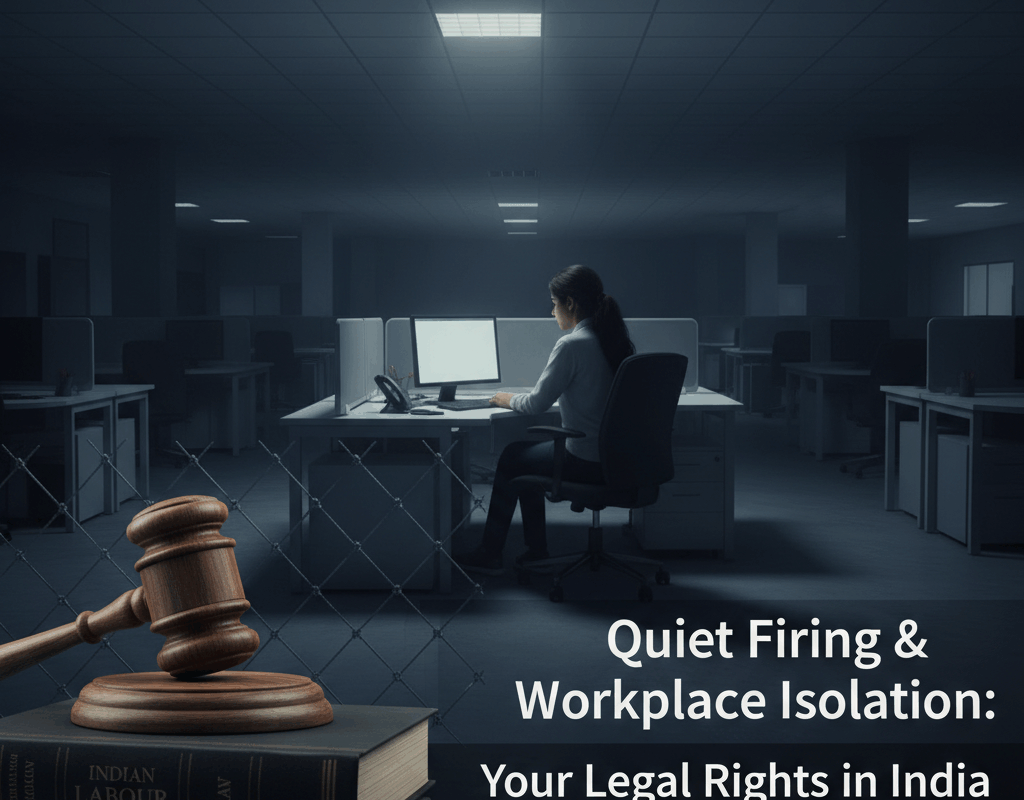
What is your reaction?
Excited
0
Happy
0
In Love
0
Not Sure
0
Silly
0

